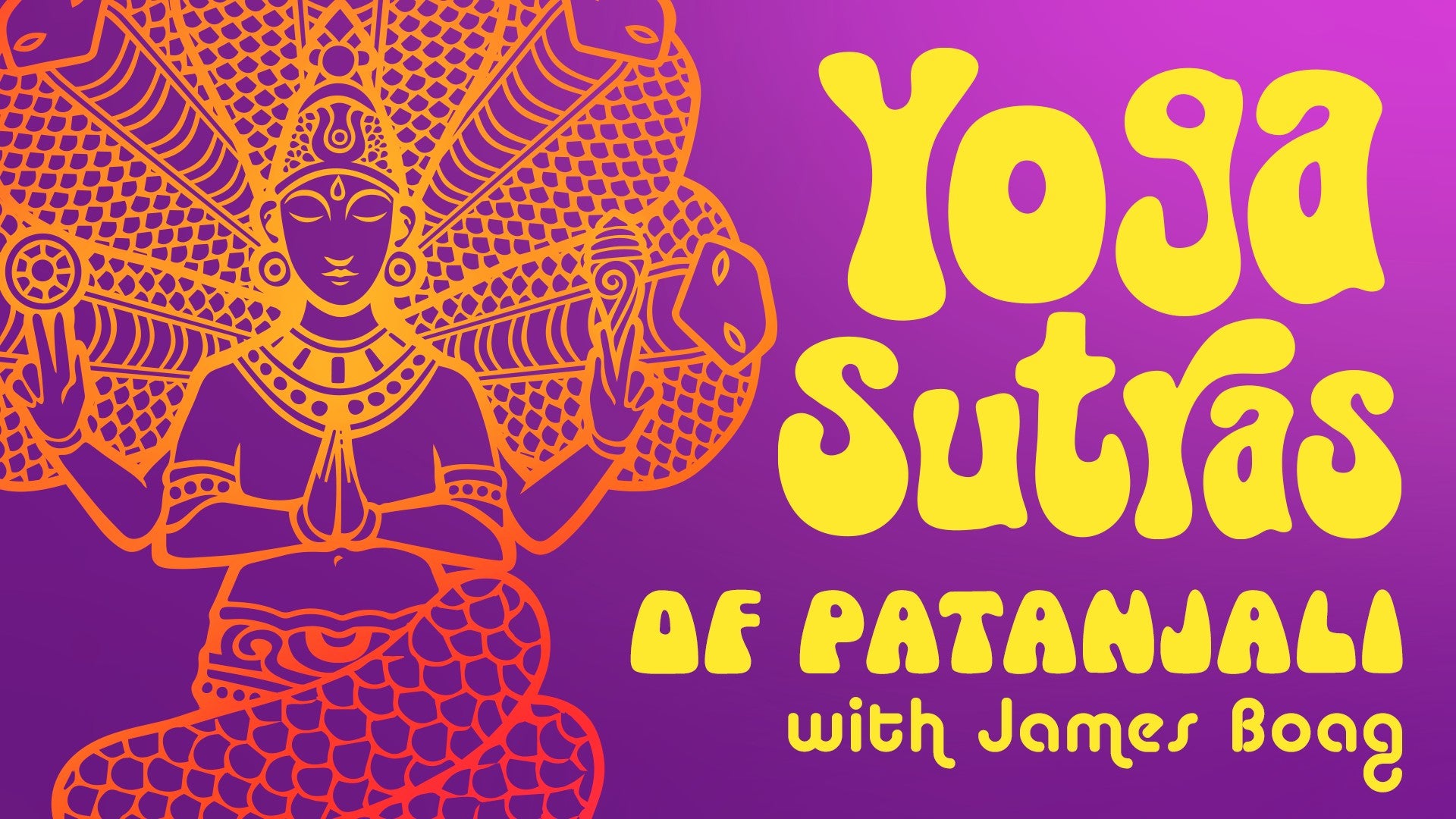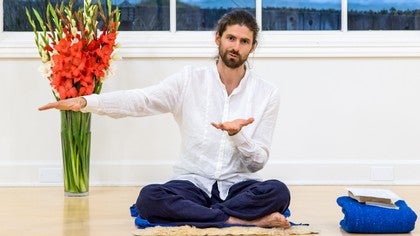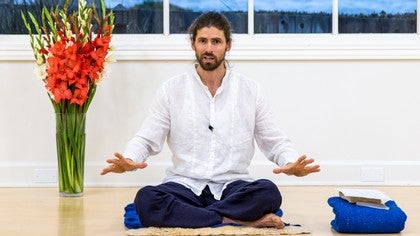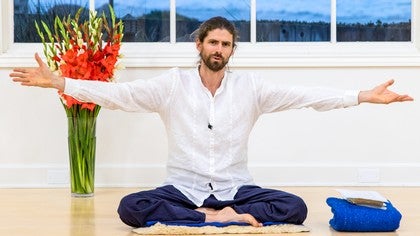This episode is part of a course.
Season 3 - Episode 1
Description
James unpacks Sutras 1.17-1.18: vitarka vichara ananda asmita rupa anugamat samprajnatah (1.17) and virama pratyaya abhyasa purvah samskara shesha anyah (1.18). In these sutras, Patanjali defines the different types of samadhi (deep state of integration)—samprajnata and asamprajnata—how they work, how we can use these techniques to center ourselves, and finally how we can work on resolving conditioned patterns that are no longer serving us.
What You'll Need: No props needed
About This Video
Yoga Sutras of Patanjali: Your Attention, Please
Comments
Skip to Latest
Thank you James for the clear explanations of Patanjali's Yoga Sutra's. I have had this book for years and even though it has explanations in it, it just was not providing clarity. Really enjoying your talks, I just hope they keep going and cover all 196. :)
6 years ago
Really clear! Defining the Sanskrit words one at a time opens a fascinating window on the thinking behind the Sutras. Describing the sequence of the Sutras in relation to a our experience of practice also makes them relevant and approachable. We are learning about the Sutras in a course here in Jerusalem but through Hebrew translations. I felt I was missing something because of a limited vocabulary. Your videos have been a help but more importantly an inspiration to learn more. Bravo!
5 years ago
I agree with what was said above - the clear examples, the lake in particular is amazing at describing what might happen if we experience even momentary peace, new and subtler patterns come up all the time. And also the housework, brilliant, you sit there quietly and you notice the dust, constant cleaning required, it never ends. Thank you James for making this so very clear.
4 years ago
1.18 is challenging...asamprajñata samādhi is not mentioned in so many words - it took me a few lookups to realise it's implied. I still find the brevity and super concise form of the sūtra-s something to get to grips with. And a lesson to using precise and concise language. And also, I noticed, that oftentimes the sūtra following the preceding one is a continuation of the meaning, an elaboration and explanation of a term introduced before.
4 years ago
I can't help myself from laughing out loud, since what you describe in the last video is soooo close to home. Had been teaching yoga classes for 10 years, everything was going smootly, then BAM :big invalidating pain. Put aside yoga for while (more then a year), thinking it was not useful for "real life". Went on a path to understand all that, healed myself, found my "truths about life and what it means to be human", only to come back to the Yoga Sutras and get that everything I though I has found "on my own" was already in there... Lol.  Thank you again for translating the sutras in such a practical , classy and qualitative way.
Thank you again for translating the sutras in such a practical , classy and qualitative way.
 Thank you again for translating the sutras in such a practical , classy and qualitative way.
Thank you again for translating the sutras in such a practical , classy and qualitative way.
4 years ago
If life seems to be moving in the same pattern of energy. Is telling you to move out of it or is it wanting more reflection?
3 years ago
1-10 of 12
You need to be a subscriber to post a comment.
Please Log In or Create an Account to start your free trial.















